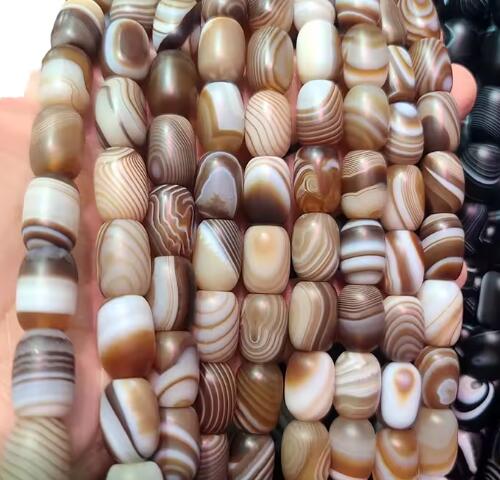Is the Processing Time of Brass Alloy Jewelry Longer Than That of Stainless Steel Jewelry?
In jewelry manufacturing, processing time has a direct impact on production lead times, inventory management, and even final pricing—and one question consistently comes up: Does brass alloy jewelry require more time to process than stainless steel jewelry? The answer is it hinges on the specific processing stage and design complexity, but brass often demands additional time in critical steps due to its distinct physical characteristics and the extra care needed to achieve its desired appearance and durability. While stainless steel excels in speed for certain processes, brass requires more meticulous handling to deliver its signature look. Let’s break down the key processing phases to clarify where (and why) these time differences occur.
1. Cutting & Shaping: Stainless Steel Leads in Precision Speed, Brass’s Malleability Has Trade-Offs
The initial phase—transforming raw metal into basic forms (such as pendant blanks or bracelet links)—highlights subtle yet notable differences:
-
Stainless Steel: Its inherent hardness and rigidity make it ideal for high-speed CNC (Computer Numerical Control) machines. These automated tools, equipped with carbide-tipped cutters, can slice, drill, or mill stainless steel into precise shapes rapidly—for simple designs like a plain ring band, this often takes just 5–10 minutes per piece. However, its hardness becomes a drawback for intricate cuts, such as detailed floral engravings: machines must operate at slower speeds (20–30% lower than for brass) to prevent overheating the tool or damaging the metal, which extends processing time.
-
Brass Alloy: Brass is softer and more malleable, making it easier to shape by hand or with basic rotary tools. For straightforward designs like a small circular charm, brass might be shaped marginally faster than stainless steel. But this malleability comes with a catch: brass is prone to warping under pressure or denting during cutting. To avoid defects, workers often use specialized clamps to stabilize the metal and make smaller, more controlled cuts—adding 10–20% extra time for precision-focused pieces, like a rectangular pendant with sharp edges.
2. Surface Finishing: Brass Needs Extensive Steps to Prevent Tarnish & Boost Aesthetics
The most significant time gap emerges during surface finishing—a vital step to enhance visual appeal and protect against wear:
-
Stainless Steel: Thanks to its chromium content, stainless steel naturally resists rust and tarnish, so finishing is typically minimal. Common processes include mechanical polishing (using abrasive wheels to achieve a shiny or brushed finish) and occasional PVD (Physical Vapor Deposition) coating for color, such as rose gold or black. Polishing takes just 5–10 minutes per piece, and PVD coating is done in bulk in vacuum chambers—adding only 2–4 hours to a production batch of 50–100 pieces. No additional protective layers are necessary, so the finishing process wraps up quickly.
-
Brass Alloy: Brass oxidizes rapidly when exposed to air and moisture, leading to tarnish (a dull, greenish layer). This means it requires a multi-step finishing process to maintain its luster:
-
Polishing: Brass needs thorough buffing with fine-grit abrasives (starting with 400-grit sandpaper, moving to 1200-grit) to achieve a bright, golden sheen. This takes 15–20 minutes per piece—nearly twice as long as stainless steel—because its softer texture requires more careful work to avoid creating uneven surfaces.
-
Protective Coating: After polishing, brass must be treated with a clear lacquer (like acrylic or nitrocellulose) or electroplated (with gold, silver, or nickel) to block oxidation. Applying lacquer requires meticulous cleaning (to remove polish residue) and a 24–48 hour drying period in a climate-controlled room. Electroplating adds even more time: the brass pieces need to be dipped in multiple chemical baths (for cleaning, etching, and plating) and cured at specific temperatures—extending the process by 1–2 full days per batch.
-
Touch-Ups: Brass coatings are more susceptible to scratches during handling (e.g., moving pieces from the coating station to packaging). Workers often need to touch up small blemishes with a tiny brush and additional lacquer or plating—adding another 30–60 minutes per batch of 50 pieces.
3. Design Complexity: Intricate Work Can Narrow (or Widen) the Time Gap
The complexity of the jewelry design plays a pivotal role in how processing times compare between the two materials:
-
Simple Designs (e.g., plain pendants, thin cable bracelets): Stainless steel is faster overall. Its speed in cutting (thanks to high-speed CNC) and minimal finishing mean a batch of 50 simple pendants can be processed in 1–2 days. Brass, with its extra polishing, coating, and touch-up steps, takes 2–3 days for the same batch.
-
Intricate Designs (e.g., engraved amulets with filigree, multi-piece link bracelets): The time gap shrinks. Stainless steel’s hardness slows down engraving: a detailed amulet might take 20–30 minutes per piece to engrave (vs. 10–15 minutes for brass). Brass, while faster to engrave, still needs the full finishing process—but the time saved in engraving can offset some of the finishing delay. For example, an engraved brass amulet might take 3 days to process, while the same design in stainless steel takes 2.5 days—a much smaller gap than with simple designs.
4. Post-Processing Quality Checks: Brass Demands More Thorough Inspections
Final quality control steps also add to brass’s processing time:
-
Stainless Steel: Inspections focus on two key areas: shape precision (using calipers to check dimensions) and coating adhesion (a simple scratch test with a fingernail or soft tool). These checks are quick—taking just 30 minutes per batch of 50 pieces—since stainless steel’s durability means defects are rare.
-
Brass: Inspectors must conduct more rigorous tests to ensure quality: checking for tiny tarnish spots (even on hidden edges), verifying coating uniformity (using a magnifying glass to spot thin or uneven areas), and assessing for warping (by laying pieces on a flat surface to check for gaps). This detailed process often takes 1–2 hours per batch of 50 pieces—3–4 times longer than stainless steel checks.
In summary, brass alloy jewelry typically takes longer to process than stainless steel jewelry—especially for simple designs—due to its need for extensive surface finishing and rigorous quality checks. For intricate designs, however, the gap narrows as stainless steel’s hardness slows down detailed work like engraving. For shoppers, this means brass jewelry may have slightly longer lead times, but the extra time often results in its distinctive warm, golden aesthetic that many find appealing. For jewelry brands, understanding these differences is key to setting realistic production timelines—ensuring both top-tier quality and on-time delivery, regardless of the material used.









